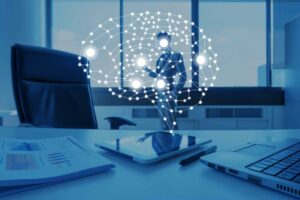Content
- Why is continuous monitoring necessary in DevOps?
- Continuous Health Monitoring in Home Healthcare Industry
- Try the Centraleyes Risk & Compliance
- Company
- M&E helps organizations replicate the best projects/programs
- Reasons Why Monitoring and Evaluation is Important
- What is Continuous Security Monitoring and Why is it Important?
Not only does it allow you to set alerts for any malicious behaviour from outside your network, it highlights unusual activity by your own employees, making it more difficult for an attacker. When it comes to the security of your business, knowing what’s going on under the hood, in your network and computer systems, is incredibly important. Developing a good M&E plan requires a lot of organization. That process in itself is very helpful to an organization. It has to develop methods to collect, distribute, and analyze information.
- Research (Dochy & McDowell, 1997) has indicated that continuous assessment has a greater learning effect than does test only at the end of the learning process.
- The ultimate objective of continuous assessment is to increase the learning effect.
- Real-time continuous monitoring of engineering maintenance cycles for machinery to insure up-to-date and consistent maintenance and safety.
- However, employees continue to use apps and devices that are not approved.
- Third-parties pose a variety of cybersecurity risks to organisations that need to be assessed.
- When problems are identified early on, it allows you to do proper planning and prepare for the worst.
As attackers become more sophisticated and hacking more lucrative, businesses need to implement appropriate proactive security practices. IT specialists must be prepared, minimize the numerous and emerging threats, and effectively secure their digital infrastructure. Some examples of CSM include continuous attack surface management, vulnerability scanning, and asset discovery. Implementing an alert system that instantly alerts the appropriate personnel the moment an IT event occurs is a key part of continuous monitoring. This allows for quick response to security risks or functional stop-gaps, limiting harm and allowing for speedier system restoration to optimal levels of functioning. In the DevOps and IT operations lifecycles, Continuous Monitoring is a mechanism for monitoring and identifying compliance and security risks.
Why is continuous monitoring necessary in DevOps?
Involve executive-level ongoing oversight of security and privacy risks. They capture a static snapshot of a single point in time. This means that in between periodic checks, major security incidents may have happened without our knowledge. This is because you will be able to address issues as soon as they happen. This way, you can minimize the impact of any problem and avoid any downtime in an application. Course Hero is not sponsored or endorsed by any college or university.
Often, control testing is limited to just satisfying regulatory compliance standards and preparing for the next audit. But when an organization takes such a fragmented approach to control testing, they’re likely to overlook flaws in their control management that can expose them to risk. It helps you identify bugs, performance issues, and securityvulnerabilities in an application.With this, you can take action at the right time to ensure everything is still running smoothly. The results from continuous monitoring, on the other hand, provide a clear picture of your app’s current state.
Continuous Health Monitoring in Home Healthcare Industry
Healthcare organizations and providers are required to maintain compliance with relevant federal healthcare laws and regulations, as well as with the Centers for Medicare and Medicaid Services guidelines. Healthcare professionals work closely with vulnerable populations, such as seniors and children. This means that safety and risk mitigation must be a top priority for healthcare employers. For example, an employer may need to further assess a healthcare worker who was arrested for a violent crime or sexual assault after being hired. These types of concerns are important for any industry to consider, but even more so for the healthcare industry, where lives are at stake every day. Real-time continuous monitoring of engineering maintenance cycles for machinery to insure up-to-date and consistent maintenance and safety.

Continuous Monitoring will alert the development and quality assurance teams if particular issues arise in the production environment after the software has been published. It gives feedback on what’s going wrong, allowing the appropriate individuals to get to work on fixing the problem as quickly as feasible. The Benefits of Continuous Monitoring Monitoring employees on an ongoing basis is becoming more and more necessary as organizations seek… An MVR check stands for “Motor Vehicle Report” check or “Motor Vehicle Record” check.
Try the Centraleyes Risk & Compliance
This is because you will be able to identify the problematic components so you can take action before it causes any impact on your app’s performance. It allows you to fix problems quickly and avoid downtime in an application. Yet all this presents a large workload for the team that has to deal with all these alerts.
A common roadblock to continuous control monitoring is obtaining data access. IT departments that protect data like crown jewels are understandably reluctant to release datasets to be monitored regularly. Even if access is achieved temporarily, regularly accessing and downloading the data can pose a technical and integral challenge. Continuous control monitoring is worthless without access to data. Security teams often lack the resources for rigorous control management.
As an example, fields that have traditionally relied on standardized tools like questionnaires, focus groups, interviews, and so on can branch out to video and photo documentation, storytelling, and even fine arts. Innovative tools provide new perspectives on data and new ways to measure success. Projects never go perfectly according to plan, but a well-designed M&E helps the project stay on track and perform well. M&E plans help define a project’s scope, establish interventions when things go wrong, and give everyone an idea of how those interventions affect the rest of the project.
As we can see from the example, traditional security is not enough. These are now not enough against sophisticated cyber attackers. However, employees continue to use apps and devices that are not approved. Organizations must have the ability to manage this technology.
Developing M&E plans also requires organizations to decide on desired outcomes, how to measure success, and how to adapt as the project goes on, so those outcomes become a reality. Good organizational skills benefit every area of an organization. M&E provides a detailed blueprint of everything that went right and everything continuous monitoring strategy that went wrong during a project. Thorough M&E documents and templates allow organizations to pinpoint specific failures, as opposed to just guessing what caused problems. Often, organizations can learn more from their mistakes than from their successes. Stay current on background screening best practices and industry news.
Company
Network monitoring shows you how well your platform is running – if there are any bottlenecks, any errors or if devices are offline. Some of these could be due to malware, which is where your security monitoring adds the extra layer of alerts and protection. Network monitoring looks at the components of the network infrastructure, whereas security monitoring covers things like file and integrity monitoring.
A data breach can cause irreparable harm to your operations, finances and reputation. Security monitoring can help you stay ahead of the attackers. A recent study that came out reminds us here at EiQ that the importance of continuous monitoring needs to be implemented on a more regular basis, and that most companies don’t work hard enough to do so. For example, a new ransomware called Ryuk infected several businesses. As a result, affected businesses paid the attackers nearly $640,000 in ransom. It shares its code with another ransomware called Hermes.
As with any employee policy, a continuous monitoring and self-reporting policy should be shared at the time of hiring and readily available to them if they want to reference it. If you’re not continuously monitoring your employees, you may not be aware of behavioral missteps, criminal charges or loss of license that makes them a legal liability for your organization. This kind of situation can also have compliance https://globalcloudteam.com/ implications if you are in a regulated industry. Continuous monitoring gives you a clear picture of the current state of the application and helps you make better decisions to address issues as soon as they happen. This way, it allows you to maximize the performance and minimize the cost of your application and infrastructure. The ultimate objective of continuous assessment is to increase the learning effect.
Six ways healthcare organizations can improve connected device security – SC Media
Six ways healthcare organizations can improve connected device security.
Posted: Tue, 08 Nov 2022 11:00:00 GMT [source]
This way, when problems inevitably arise, a quick and effective solution can be implemented. We offer proven background screening solutions for clients across many industries. Gain end-to-end visibility of every business transaction and see how each layer of your software stack affects your customer experience. Monitors and tracks network activities, including firewalls, routers, switches, servers, virtual machines, and other devices. Network monitoring detects potential and current issues and notifies the appropriate personnel. Its main objective is to prevent network outages and breakdowns.
M&E helps organizations replicate the best projects/programs
Because organizations track, analyze, and report on a project during the monitoring phase, there’s more transparency. Information is freely circulated and available to stakeholders, which gives them more input on the project. A good monitoring system ensures no one is left in the dark. With information so available, organizations need to keep everything above board. Retrace – It’s designed to provide you with visibility, data, and actionable insights about the performance and challenges of your application. AppDynamics – This software continuously monitors and collects historical data from your application, allowing it to create a performance baseline.

No matter the industry, ongoing monitoring of your employees may protect your employees, prevent legal issues, or at a minimum, provide peace of mind. Read ourreportto find out what percentage of organisations monitor key suppliers daily, this is something that global regulators consider to be a gold standard within third-party risk monitoring. Another percentage flex their requirement depending on the supplier and the risk exposure. Continuous risk monitoring gives you timely insight into your third parties’ security posture and certain measures must trigger the need for an assessment/re-assessment, for instance, a change in security rating. These types of assessments can theoretically prevent certain risks from being introduced into the third-party environment. Security monitoring helps identify sophisticated threats that can evade more traditional security tools.
Reasons Why Monitoring and Evaluation is Important
Continuous monitoring identifies hidden system components, misconfigurations, vulnerabilities, and unauthorized actions. The provision of data-driven updates enhances a culture of proactive risk management. Since security monitoring is real-time, organizations detect devices as soon as they connect to the network. As a result, it helps IT professionals prevent attacks early. Log aggregation is a function of CM software solutions that aggregates log files from applications deployed on the network, including security applications in place to protect information assets.
While helping organizations maintain good cyber hygiene, it is also vital to remain compliant with data security protection regulations. CSM can help detect compliance issues, which is why it is increasingly considered an essential part of cyber security. The New York Department of Financial Services strongly promotes the use of CSM as an essential element of cyber security. Continuous vulnerability scanning and asset discovery allow you to map your external perimeter. The features inform you of what the components of your attack surface are , where the attack vectors and exposures are located, and how to shield your organization from future data breaches and cyberattacks. Such insight is invaluable for an organization’s threat response.
Helps relieve pressure from your team.
To protect your digital environment from a cyber attack, complete visibility of your digital architecture is vital. To decide which processes should be monitored, conduct a security risk analysis to assess and prioritize your threats. The systems, applications, and processes you choose to track should give you enough information to improve your entire environment. Each asset that an IT organization seeks to secure should be assessed for risk, with assets being classified depending on the risk and potential consequences of a data breach. Higher-risk assets will necessitate more stringent security controls, whereas low-risk assets may not.
